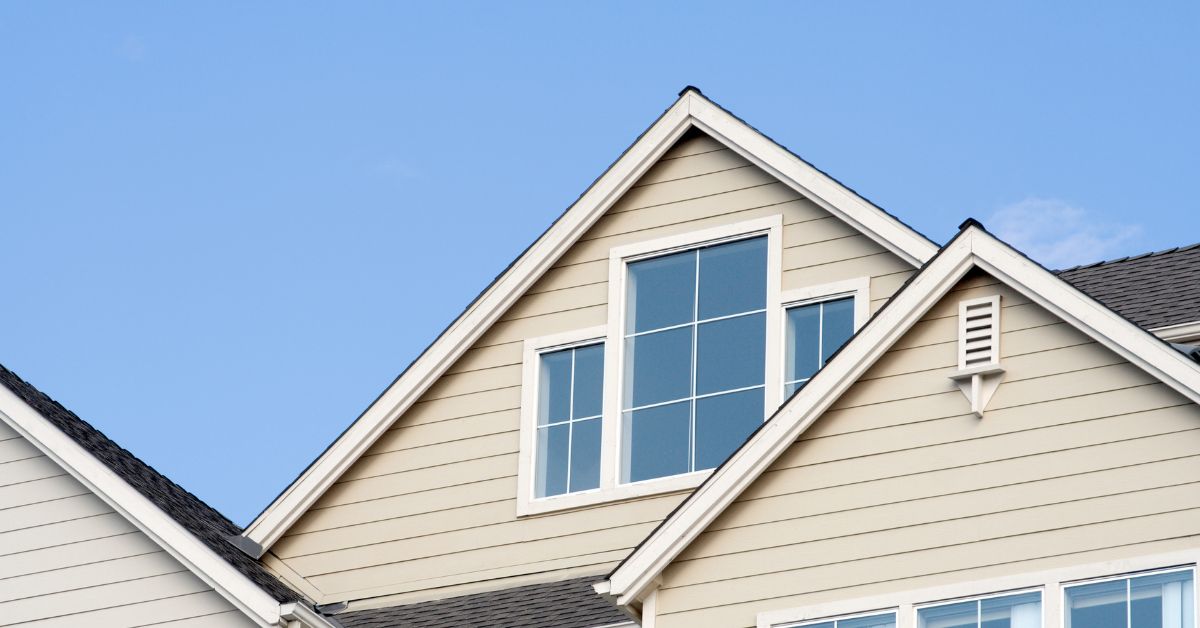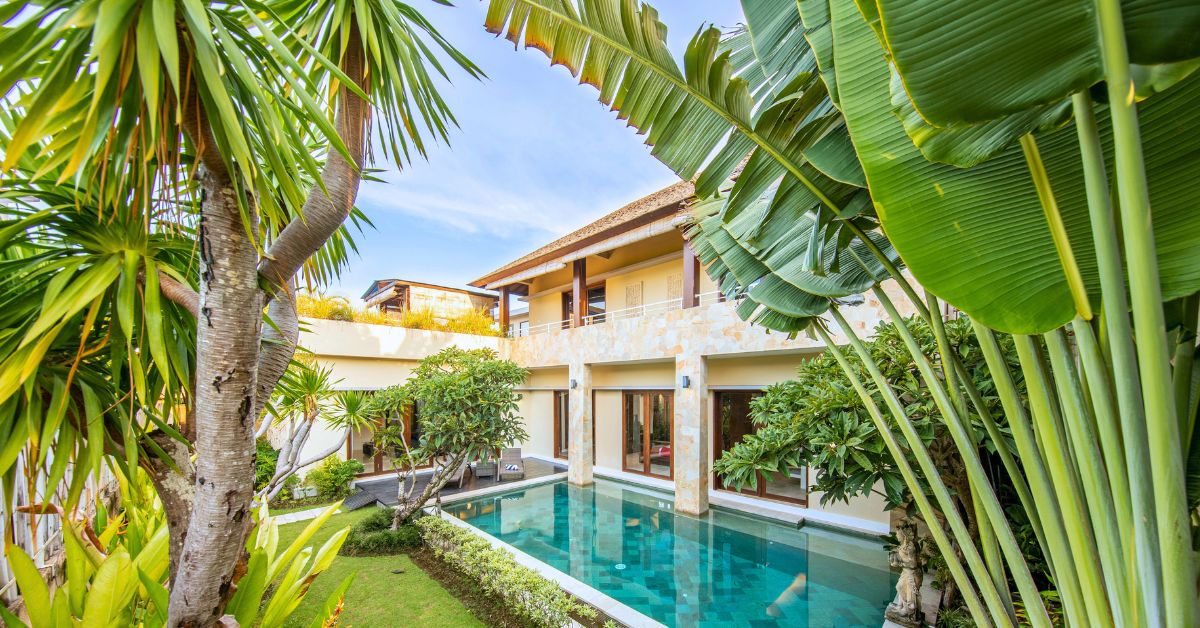While taking out a Kredit Pemilikan Rumah (KPR), or mortgage, remains one of the most popular ways for Indonesians to purchase their dream home, the reality is that not every application ends in success. A significant number of aspiring homeowners face rejection from banks, often without clear understanding of the reasons why.
So, why does a mortgage application get rejected? What are the warning signs? And most importantly—what can be done about it? Let’s break it all down.
What Is a Mortgage (KPR)?
Owning property in Indonesia involves thoughtful planning across a range of financial and legal considerations. One major factor that influences one’s ability to secure a home is, naturally, the cost; homes don’t come cheap.
A mortgage, or KPR, is essentially a loan facility provided by a bank or financial institution, designed to help you purchase property. As a borrower, you agree to repay the loan in instalments over a fixed term, complete with agreed-upon interest rates and specific conditions.
Through a mortgage scheme, you only need to put down a deposit (commonly referred to as DP), while the remaining balance is paid off in monthly instalments over a tenor that can range anywhere from 5 to 25 years.
And it’s not limited to new properties. KPR schemes can also apply to second-hand homes, renovation projects, or even auctioned properties, depending on the policies of each bank.
Basic Mortgage Requirements in Indonesia
Though every bank may have its own policies and procedures when it comes to mortgage approval, several baseline criteria are widely applied by financial institutions across Indonesia. Understanding these can give you a better sense of how ready you are before making a formal application.
Applicant’s Age
Banks usually set age limits to ensure that borrowers remain in their productive working years throughout the mortgage term.
- Minimum age: 21 years old, or legally married.
- Maximum age: Generally 55 years old by the end of the loan term, or up to 65 for certain professionals or self-employed individuals with proven financial stability.
If you're too young (with no stable income yet) or too close to retirement, your application might be declined or the approved tenor might be significantly shortened.
Stable and Consistent Income
Your monthly income plays a critical role in determining your eligibility. The bank needs to ensure that you have sufficient means to cover the monthly repayments.
For employees, this typically means showing payslips and a letter of employment confirming at least two years of work experience.
For entrepreneurs or freelancers, expect to submit bank statements, business financial reports, and a valid tax number (NPWP).
The more transparent and steady your cash flow appears, the stronger your case for a mortgage approval.
Debt to Income Ratio (DTI)
This refers to the percentage of your monthly income that goes towards debt repayments—including the mortgage you’re applying for.
Most banks cap this ratio at around 30–40% of your net monthly income.
If you already have other loans—such as credit card payments, car finance, or personal loans—these will be factored into the equation.
A high ratio will signal risk to the bank, often resulting in rejection.
Clean Credit Report (BI Checking / SLIK OJK)
Banks will also review your credit report via Indonesia’s credit information system, formerly known as BI Checking, now called SLIK OJK.
Late payments on credit cards, overdue motorbike loans, or unpaid online loans will all show up—and they matter.
If your credit falls into the collectability level 3 or above (usually indicating delinquency), your mortgage application will most likely be declined. That's why keeping a clean credit record is vital before you even consider applying.
Signs That Your Home Loan Application May Be Rejected
After understanding the key requirements for applying for a Mortgage—whether it’s for a home or a commercial property—the next thing to look out for are the red flags that may signal a failed application.
To avoid being left in limbo or holding on to false hope, here are several common indicators that your KPR application may have been rejected:
The Bank Doesn’t Get Back to You
If it’s been more than two weeks since you submitted your application and you haven’t heard a word from the bank—or they’ve only given vague or inconclusive responses—this may be an early sign that your Mortgage application has been quietly declined.
High Debt Ratio
One of the most common reasons for rejection is having a debt-to-income ratio that’s simply too high. If your monthly debt obligations (including the proposed mortgage repayments) exceed 40% of your total income, the bank may see you as a high-risk borrower with limited repayment capacity.
Incomplete or Inaccurate Documentation
Even small errors or mismatches—like an inactive tax number (NPWP), inconsistent payslips, or unclear photocopies of your ID—can halt your application. These technical issues can cause your file to be rejected before it even reaches the approval stage.
Why Was My KPR Application Rejected?
1. Being Dishonest During the Interview Process
Transparency is absolutely non-negotiable when applying for a Mortgage. Banks have strict verification processes that cover your financial history, employment, and outstanding debts.
If you attempt to “polish” your data—such as by:
- Claiming you have no existing loans when you actually do,
- Inflating your income without legal proof,
- Hiding other financial obligations,
the bank may consider your application too risky and reject it outright. Any indication of dishonesty or manipulation is an immediate red flag.
2. Applying for a Mortgage with a Poor Credit History
Every financial transaction you’ve made using credit is recorded in what was once called BI Checking, now referred to as SLIK OJK in Indonesia. If you have ever:
- Defaulted on a credit card between 1–24 months before applying,
- Been late on car loans or online lending repayments,
- Regularly paid instalments past their due date,
your credit score will likely have taken a hit—making you a less attractive borrower in the eyes of banks. A low credit score often translates to an automatic rejection.
3. Listed on the BI Checking / SLIK OJK Blacklist
If you’ve had a loan go into default or have previously failed to make repayments entirely, and this has placed you on the SLIK OJK blacklist, your chances of getting a KPR approved are extremely slim. Banks typically won’t take the risk with applicants who carry a history of serious financial red flags.
4. Too Many Active Debts
Banks assess your Debt-to-Income Ratio carefully. If:
you already have multiple ongoing instalments—say, a car loan, gadget financing, and a few credit cards;
and your total repayments exceed 40% of your monthly earnings,
lenders may see you as financially overextended. and simply doesn’t leave enough breathing room for a new mortgage.
5. Age and Employment Instabilit
Age and job stability play a major role in whether your mortgage application will be approved. Here are a few conditions that might raise red flags:
Your age at the end of the mortgage term is near or beyond retirement,
You’ve only just started your current job (less than 1–2 years),
You’re on a contract or freelance basis without proof of stable income.
Banks need assurance that your income will remain steady throughout the loan term. Without that stability, your ability to keep up with repayments becomes questionable, and that’s a risk they’re rarely willing to take.
6. Incomplete or Invalid Documents
Even something as technical as incomplete or inaccurate paperwork can lead to your mortgage application being rejected. Banks require thorough and valid documentation as the foundation of their assessment. If issues arise right from the beginning, there’s a high chance your application won’t move forward. Here are a few common examples of documents that won’t be accepted during the mortgage (KPR) application process:
- Salary slips not matching the correct pay period
- Blurry or unclear photocopies of your ID card (KTP/NIK)
- Missing bank statements
- Inactive tax identification number (NPWP) or outdated employment letters
7. Issues with Property Ownership Status
It’s not just the applicant that needs to tick the boxes—your intended property must also meet legal requirements. Some common reasons why a mortgage application gets rejected due to property issues include:
- The land is under legal dispute
- The ownership certificate is incomplete or still under someone else’s name
- The property doesn’t yet have a valid building permit (IMB)
- Public facilities or road access around the property are in legal limbo. Banks will not approve financing for a property that isn’t considered “clean” in terms of legal or administrative status.
Mortgage Requirements for Foreign Nationals (KPR for Foreigners)
For foreign nationals (WNA) wishing to get a mortgage in Indonesia, there are additional conditions and potential hurdles to keep in mind:
- Not all banks can be mortgage lenders to foreign nationals. Some apply stricter policies and only consider applications from Indonesian citizens.
- Valid residence permits are mandatory: WNA must hold a valid KITAS or KITAP with sufficient remaining validity.
- The property must be located in zones legally designated for foreign ownership or use, as per Indonesian regulations.
- KPR for WNA only applies to properties with Right to Use (Hak Pakai) status, not Freehold (Hak Milik).
- The applicant’s income must be verifiable and ideally sourced from within Indonesia. If their primary income is from abroad, banks tend to be more cautious in evaluating financial eligibility.
If these requirements are not met, a mortgage application from a foreign national may be declined, even if all documents appear complete and finances look strong.
Banks Offering KPR for Foreign Nationals
A few banks in Indonesia have opened their doors to foreign nationals seeking home ownership through tailored KPR (mortgage) products. Below are some that currently provide these options:
Bank BCA
Bank Central Asia is one of Indonesia’s largest private banks and a well-known name in home financing. However, BCA currently does not officially provide mortgage facilities for foreign nationals. Their primary focus remains on Indonesian citizens.
Find Out More
Bank BTN
Bank Tabungan Negara is widely recognised for its commitment to housing finance. BTN has expressed its readiness to offer KPR products to foreign nationals, in line with existing government regulations.
Find Out More
Bank BRI
Bank Rakyat Indonesia also facilitates mortgages for foreign nationals under specific terms:
- The facility is intended for WNA with a fixed income
- The property certificate must be under the name of a legally married Indonesian spouse
- The loan maturity must be no later than one year before the WNA’s employment contract ends
- A prenuptial agreement must be in place between the WNA and their Indonesian spouse
Mortgage Types in Indonesia
In Indonesia, there are various types of home Mortgage loan types tailored to suit different financial situations and buyer profiles. Here are some of the most common options:
First Time Buyer Conventional Mortgage (Non-Subsidised)
This is the standard mortgage option offered by banks without any government assistance. The interest rates are determined by the bank and often follow market fluctuations, which means they can go up or down over time.
Subsidised Mortgage (KPR Subsidi)
This government-backed programme is aimed at helping lower-income earners purchase their first home. It typically offers lower interest rates and a reduced down payment to make home ownership more accessible.
Sharia Mortgage (KPR Syariah)
A KPR scheme based on Islamic principles, where transactions are structured around buying and leasing agreements rather than charging interest. It provides a more ethical alternative for buyers who prefer sharia-compliant financial products.
Mortgage Refinancing (KPR Refinancing)
This type of loan allows homeowners to use their existing property as collateral to access additional funds. It’s commonly used for home renovations, consolidating debt, or covering other financial needs.
Mortgage Take Over
This facility enables homeowners to transfer their existing mortgage from one bank to another, usually in pursuit of better rates or improved service.
Requirements for Subsidised and Non-Subsidised KPR
The application process for a mortgage can differ depending on whether you’re applying for a subsidised or commercial (non-subsidised) scheme. Here’s a breakdown:
Commercial Mortgage (Non-Subsidised) Requirements
Age: Applicants must be at least 21 years old and no older than 55 (or up to 65 for certain professions) by the end of the loan term.
Income: Must have a stable income and sufficient financial capacity to manage repayments.
Employment Duration: At least one year for permanent employees, or two years for freelancers and entrepreneurs.
Documents: A complete set of documents including ID (KTP), tax number (NPWP), salary slips, bank statements, and supporting documents.
Subsidised Mortgage (KPR Subsidi) Requirements
Nationality: Must be an Indonesian citizen living in Indonesia.
Age: At least 21 years old or married, and no older than 65 by the end of the mortgage term.
Income Cap: Monthly income must not exceed IDR 8 million for landed or vertical housing.
Property Ownership: Applicants must not already own a home or have received prior housing subsidies.
Employment Duration: Minimum of one year of employment.
Simulasi KPR: Hitung Suku Bunga KPR Anda dengan Kalkulator KPR Lets Move Group!
Use the Lets Move Group mortgage calculator to see the estimated value of your potential dream home and how much you can borrow!
Benefits and Drawbacks of Commercial vs Subsidised KPR
Choosing between a commercial and subsidised mortgage requires thoughtful consideration, as both offer distinct advantages and limitations.
KPR Rumah Komersial dan KPR Rumah Subsidi. Masing-masing memiliki keunggulan dan kekurangan yang perlu dipertimbangkan sebelum memutuskan untuk mengajukan.
Keunggulan KPR Rumah Komersial
- Fleksibilitas Pilihan Properti: KPR komersial memberikan kebebasan bagi pembeli untuk memilih berbagai jenis properti tanpa batasan harga atau spesifikasi tertentu. Hal ini memungkinkan pembeli untuk menyesuaikan pilihan rumah sesuai dengan kebutuhan dan preferensi pribadi.
- Kualitas Bangunan Lebih Baik: Umumnya, rumah komersial dibangun dengan material dan spesifikasi yang lebih tinggi dibandingkan rumah subsidi. Ini mencakup ukuran bangunan yang lebih luas, desain yang modern, serta fasilitas tambahan seperti taman atau area bermain.
- Lokasi Strategis: Perumahan komersial seringkali terletak di lokasi yang lebih strategis, dekat dengan pusat kota, fasilitas umum, dan akses transportasi yang memadai, sehingga memudahkan mobilitas penghuninya.
- Potensi Investasi yang Menguntungkan: Dengan kualitas bangunan yang lebih baik dan lokasi yang strategis, rumah komersial memiliki potensi kenaikan nilai investasi yang lebih tinggi di masa depan.
Kekurangan KPR Rumah Komersial
- Harga Lebih Tinggi: Tanpa adanya subsidi dari pemerintah, harga rumah komersial cenderung lebih mahal. Hal ini berdampak pada besarnya uang muka dan cicilan bulanan yang harus dibayarkan oleh pembeli.
- Suku Bunga Mengambang: KPR komersial biasanya menerapkan suku bunga yang mengikuti fluktuasi pasar. Ini berarti cicilan bulanan dapat berubah sesuai dengan kondisi suku bunga yang berlaku, sehingga memerlukan perencanaan keuangan yang matang.
- Uang Muka Lebih Besar: Pembelian rumah komersial melalui KPR umumnya mensyaratkan uang muka yang lebih tinggi dibandingkan dengan rumah subsidi, yang bisa menjadi beban finansial awal bagi pembeli.
Keunggulan KPR Rumah Subsidi
- Harga Terjangkau: Rumah subsidi ditujukan untuk masyarakat berpenghasilan rendah, sehingga harganya lebih murah dibandingkan rumah komersial. Ini memungkinkan lebih banyak orang untuk memiliki rumah dengan biaya yang lebih ringan.
- Uang Muka dan Cicilan Ringan: Pemerintah memberikan subsidi berupa uang muka yang rendah, bahkan mulai dari 1% dari harga rumah. Selain itu, suku bunga KPR subsidi biasanya tetap dan rendah, sehingga cicilan bulanan menjadi lebih ringan dan terjangkau.
- Bebas Pajak Pertambahan Nilai (PPN): Pembelian rumah subsidi dibebaskan dari PPN, sehingga mengurangi beban biaya tambahan bagi pembeli.
- Tenor Panjang: KPR subsidi menawarkan jangka waktu pinjaman yang panjang, hingga 20 tahun, yang memungkinkan cicilan bulanan lebih rendah dan sesuai dengan kemampuan finansial pembeli.
Kekurangan KPR Rumah Subsidi
- Kualitas Bangunan Standar: Untuk menekan biaya, rumah subsidi seringkali dibangun dengan material dan spesifikasi standar. Hal ini mungkin memerlukan renovasi tambahan di masa depan untuk meningkatkan kualitas atau kenyamanan.
- Lokasi Kurang Strategis: Banyak perumahan subsidi yang dibangun di pinggiran kota atau daerah yang belum berkembang, sehingga akses ke fasilitas umum dan transportasi mungkin terbatas.
- Ukuran dan Fasilitas Terbatas: Rumah subsidi umumnya memiliki luas bangunan dan tanah yang lebih kecil, serta fasilitas perumahan yang minim dibandingkan dengan rumah komersial.
- Keterbatasan dalam Jual-Beli: Terdapat aturan yang membatasi penjualan kembali rumah subsidi dalam jangka waktu tertentu, sehingga kurang fleksibel jika ingin menjualnya dalam waktu dekat.Cara Pengajuan KPR1. Lakukan Penelitian dan Persiapan AwalSebelum mengajukan KPR, penting untuk melakukan riset mendalam mengenai:
- Kondisi Keuangan Pribadi: Evaluasi kemampuan finansial Anda, termasuk penghasilan bulanan, pengeluaran rutin, dan potensi cicilan. Pastikan rasio utang terhadap penghasilan tidak melebihi 30–40%.
- Jenis Properti: Tentukan tipe rumah yang sesuai dengan kebutuhan dan anggaran Anda. Pertimbangkan lokasi, fasilitas, dan potensi kenaikan nilai properti di masa depan.
- Harga Pasar: Bandingkan harga properti di area yang Anda inginkan untuk memastikan Anda mendapatkan penawaran terbaik.
- 2. Pilih Bank yang TepatSetiap bank menawarkan produk KPR dengan fitur dan syarat yang berbeda. Pertimbangkan hal berikut saat memilih bank:
- Suku Bunga: Bandingkan suku bunga yang ditawarkan, apakah tetap (fixed) atau mengambang (floating).
- Tenor Pinjaman: Pilih tenor yang sesuai dengan kemampuan pembayaran Anda, biasanya berkisar antara 5 hingga 25 tahun.
- Biaya Tambahan: Perhatikan biaya provisi, administrasi, asuransi, dan biaya lainnya yang mungkin timbul.
- Reputasi Bank: Cari tahu reputasi bank dalam hal pelayanan dan kecepatan proses KPR.
- 3. Siapkan Dokumen-Dokumen yang Diperlukan Sesuai Syarat dan KetentuanPersiapkan dokumen lengkap untuk memperlancar proses pengajuan. Dokumen yang umumnya diperlukan meliputi:
- Identitas Pribadi:
- Fotokopi KTP pemohon dan pasangan (jika sudah menikah).
- Photocopy of the Family Card (Kartu Keluarga - KK).
- Fotokopi Akta Nikah atau Cerai.
- Fotokopi NPWP pribadi.
- Dokumen Keuangan:
- Slip gaji atau surat keterangan penghasilan asli minimal 1 bulan terakhir.
- Fotokopi rekening koran atau tabungan selama 3 bulan terakhir.
- Surat keterangan kerja atau surat rekomendasi dari perusahaan.
- Dokumen Tambahan untuk Pengusaha/Wiraswasta:
- Fotokopi SIUP (Surat Izin Usaha Perdagangan).
- Fotokopi akta pendirian perusahaan dan perubahannya.
- Fotokopi TDP (Tanda Daftar Perusahaan).
- Dokumen Properti:
- Fotokopi sertifikat tanah atau bangunan (SHM/SHGB).
- Fotokopi IMB (Izin Mendirikan Bangunan).
- Fotokopi PBB (Pajak Bumi dan Bangunan) tahun terakhir.
- Identitas Pribadi:
- Pastikan semua dokumen dalam kondisi baik dan valid untuk menghindari penolakan akibat kelengkapan administrasi.4. Lakukan Pengajuan KPRSetelah memilih bank dan menyiapkan dokumen, langkah berikutnya adalah:
- Mengisi Formulir Aplikasi: Isi formulir pengajuan KPR yang disediakan oleh bank dengan data yang akurat dan jujur.
- Penyerahan Dokumen: Serahkan semua dokumen yang telah disiapkan kepada pihak bank untuk diproses lebih lanjut.
- Pembayaran Biaya Awal: Beberapa bank mungkin meminta pembayaran biaya appraisal atau administrasi di awal proses pengajuan.
- 5. Penilaian Kredit (Credit Analysis)Bank akan melakukan evaluasi menyeluruh terhadap:
- Menilai apakah penghasilan Anda mencukupi untuk membayar cicilan KPR.
- Memeriksa rekam jejak kredit Anda melalui SLIK OJK untuk memastikan tidak ada tunggakan atau kredit macet.
- Bank akan menilai nilai pasar properti yang akan dibeli untuk memastikan sesuai dengan jumlah pinjaman yang diajukan (Properti Appraisal)
- 6. Penandatanganan Akta Kredit (Akad Kredit)Jika pengajuan disetujui, tahap akhir adalah:
- Penerbitan Surat Persetujuan Kredit (SPK): Bank akan mengeluarkan SPK yang berisi detail pinjaman, termasuk jumlah, tenor, suku bunga, dan kewajiban lainnya.
- Penandatanganan Akad: Anda akan menandatangani perjanjian kredit di hadapan notaris bersama pihak bank. Pastikan membaca dan memahami semua isi perjanjian sebelum menandatangani.
- Pencairan Dana: Setelah akad ditandatangani, bank akan mencairkan dana sesuai kesepakatan, biasanya langsung kepada penjual atau developer.
Nah, demikian hal – hal yang perlu diketahui tentang alasan KPR ditolak hingga persyaratan yang harus dipenuhi untuk meminimalisir kemungkinan penolakan pengajuan KPR anda.
Jika anda masih bingung dengan ketentuan pengajuan KPR di Indonesia, Lets Move Group menyediakan Konsultasi GRATIS bagi anda yang ingin mengajukan KPR. Melalui konsultan profesional yang telah menangani beragam pengajuan KPR di Indonesia, wujudkan impian anda untuk memiliki properti idaman anda hari ini.













